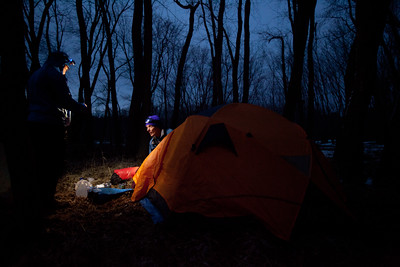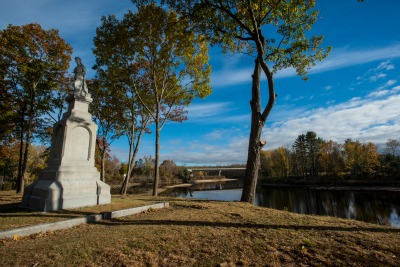Alexander Shields
By Robert Masiello
Do you ever stop and wonder how much music you haven’t heard? Have you considered how many albums out there you would love, but were never introduced to? Imagine, for a moment, the hours upon hours of recorded music that hasn’t yet found its way to your ears.
Alexander Shields just might be one of those artists who has slipped under your radar. Since 2009, he has quietly been releasing music under the moniker, A Grave With No Name. While it may sounds like the name of some Norwegian doom metal band, his earnest, fractured songs maintain a certain gracefulness lacking in so much modern music.
With his latest release, “Feathers Wet, Under the Moon,” Shields stepped away from the lo-fi, reverb-laden sound of his earlier work. The songs here are sharply produced, every note aching with mournful intensity. Fans of early Cat Power, Keaton Henson, and especially Carissa’s Wierd (yes, that’s the actual spelling) will find a lot to love here.
“Feathers Wet, Under the Moon,” opens with the hypnotic, ghostly “Nursing Home,” throughout which Shields coos, “Why is she singing all night?” It sets the stage for an elegant, introspective song-cycle. When the pace quickens, such as on “Candle” or “Orion,” the feel is somehow vast-yet-intimate, never succumbing to cheap climaxes or production tricks. Gorgeous imagery abounds, evoking both human relationships and the natural world. There’s nothing so obvious as a straightforward love song or a breakup song, but the album is stronger for it.
Throughout “Feathers Wet, Under the Mood,” Shields weaves detailed, touching stories. Lyrics such as, “people fall away/but I saw your ghost was there by the lake,” which might come off as cloying or maudlin in the hands of a less sophisticated songwriter, are imbued with warmth and sincerity. Even the album’s darkest corners are never bleak or unforgiving.
The album closes with “Natural Light,” a string-laden finale which attempts to answer the question posited in “Nursing Home.” Shields warbles, “You hear her singing every night/and she sings ’til natural light/comes visiting with the morning.” It’s not exactly a happy ending—death seems imminent—but, like all of “Feather’s Wet, Under the Moon,” it’s oddly comforting. And maybe that’s exactly what Shields is trying to tell us: even in the chaos of nature, even in the impermanence of life, there is beauty and hope.
Shields was kind enough to answer some my questions about his writing process and future album plans.
Robert Masiello: I discovered your music completely by accident. While searching reviews for the band Wet, I stumbled upon your album “Feathers Wet, Under the Moon” and was immediately enamored. How long did you spend writing the album? What was the writing process like for you?
Alexander Shields: I began writing “Feathers Wet, Under the Moon” back in July 2013, and the basic songs were finished by December of the same year. My intention was to record the album in my bedroom, however, by April 2014 I found myself far away from home in Mark Nevers’ Beech House studio in Nashville, Tenn.
The writing process was the most disciplined I have ever been while creating an album. I was suffering from insomnia at the time, so I made the best of a bad situation by getting up at 5:00 a.m. each morning, watching a film or two, and then I would spend the rest of the day writing and recording demos. My grandmother was pretty ill at the time, so it also served as good therapy for me to be occupied in that way on a daily basis.
RM: Despite a cleaner, more polished sound than your earlier work, “Feathers Wet, Under the Moon” strikes me as particularly mournful and elegiac. I think that says a lot about the quality of your songwriting; the songs don't need any lo-fi hiss or to be drenched in reverb to convey emotion. How did it feel bringing your songs to a proper studio?
AS: The thought of flying to Nashville on my own, playing with musicians far superior to myself, and working with a producer who has made some of my favourite records was incredibly intimidating, however, I was eager to challenge myself. Anyone who has worked with Mark Nevers will tell you he is a genius, and it was an honour to work in his studio, and to allow him to shape the sound of my music. Previously I had written every single note of each song, and either performed it myself, or dictated exactly how it should be played. Making “Feathers Wet, Under the Moon,” was a very different experience. Mark assembled a local group of musicians, and I would present them with the bare bones of the songs; we’d hash them out a couple of times, then press record, and create the arrangements on the fly. We had the basic tracking down by the end of the first week, and then spent the second week adding more deliberate overdubs, and textures to the songs. It was incredibly humbling to be around such great musicians, and I’m grateful to them all for making beautiful contributions to my album.
RM: I'm especially impressed by how songs such as "Candle" and "Orion" are almost anthemic without losing their sense of intimacy. Did you start with the intention of writing them as "big" songs, or did they just turn out that way?
AS: When I approach a new album, I usually set myself a few guidelines, and for “Feathers Wet, Under the Moon” my one rule was that I didn’t want to incorporate any big rock dynamics into the record, so in fact the demos of those songs are considerably more hushed than their finished album counterparts. We worked hard in the studio to ensure that the songs would swell and ache in the right places, however, I wanted to ensure that moments should not be achieved cheaply by stomping on a fuzz pedal. When the songs feel more expansive on the album it is through the accumulation of the parts coming together in the right way, which maintains an atmosphere of intimacy at the center of their ornate facades.
RM: I've noticed many references to the natural world in your song—landscapes, animals, and geography. How does nature shape and influence your music?
AS: I’m an insular, contemplative person by nature (excuse the pun), so the environments I create in my songs tend to reflect that. For me, these unpopulated, desolate, meditative spaces allow more complex thought and questions to resonate, away from the distractions and minutiae of day-to-day human life.
RM: It seems like some bands are constantly on the road, but touring doesn't seem to have been a huge part of this project so far. Do you enjoy performing live?
AS: I have a complicated relationship with live music. As an audience member I enjoy shows where the method of performance, venue, and players have all been carefully curated, but all too often, bands embark on long tours that serve little purpose other than to commodify their music and maintain their visibility. An undesired side effect of the length and infrastructure of these tours is that they have a numbing effect on the artists where performance becomes rote, and uninspired, and putting out a record becomes just another reason to keep touring. Live music can be transcendental, but the ingredients that allow this alchemy to occur are so ephemeral and multifarious that these days I tend to perform live very infrequently.
RM: I read that you're close friends with Yuck's Daniel Blumberg, and that he lent a hand in recording “Feathers Wet, Under the Moon” (side note: I'm a huge fan of the album he recorded as Oupa, and in some ways it reminds me of AGWNN). What was it like working in the studio with a friend?
AS: Daniel has lent a hand on every record I have made to date, but “Feathers Wet, Under the Moon” is the only one that he has actually played on. We are closely involved in each other’s music, and refer to each other at every step of the creative process. I was thinking about how much I love that Oupa album just a couple of days ago. It’s a beautiful record, and it was inspiring to witness its creation, and be involved in the creative process as a confidant.
Daniel was the one who suggested that I worked with Mark Nevers, and he joined me in the second week of recording to help out with overdubs and offer his guidance. Funnily enough, we ended up having the sole argument in our long friendship over a guitar solo, and didn’t speak to each other for an entire day.
RM: You've suggested on social media that a new album is already in the works. Can we look forward to it dropping this year? Are there any stylistic changes in the works?
AS: The album is finished. It’s called “Wooden Mask” and it should be out later in the year. It has a raw, sacred, elemental feel to it. The arrangements and melodies sound as though they have been stripped of their flesh. I was saying to a friend that it’s the first time I’ve made a record that actually sounds like it has been made by a project called A Grave With No Name.
RM: What recent music has caught your ear? What would your dream collaboration be?
AS: I’m very into the music being put out by Three Lobed Recordings, particularly the Daniel Bachman and Tom Carter albums they released last year. I’m a total Chief Keef obsessive, and find each of his projects fascinating at the very least. My apartment is filled with Mount Eerie records and books, so my dream collaboration would likely be to spend a week or two in the studio with Phil Elverum on production duties.
To learn more about Alexander Shields, visit his official website, like his Facebook page, follow him on Twitter @alaxander, or listen to his Sound Cloud channel.




















